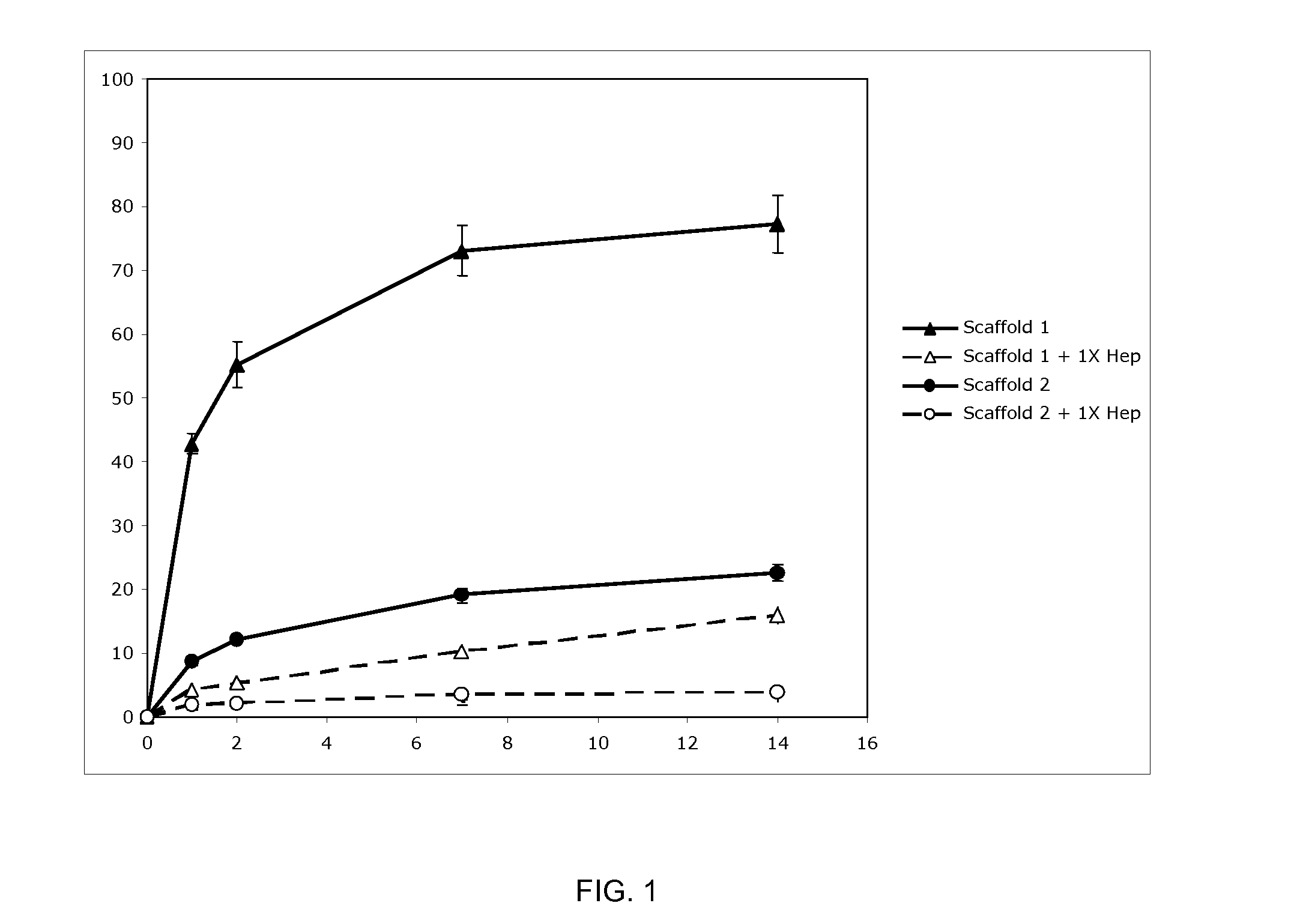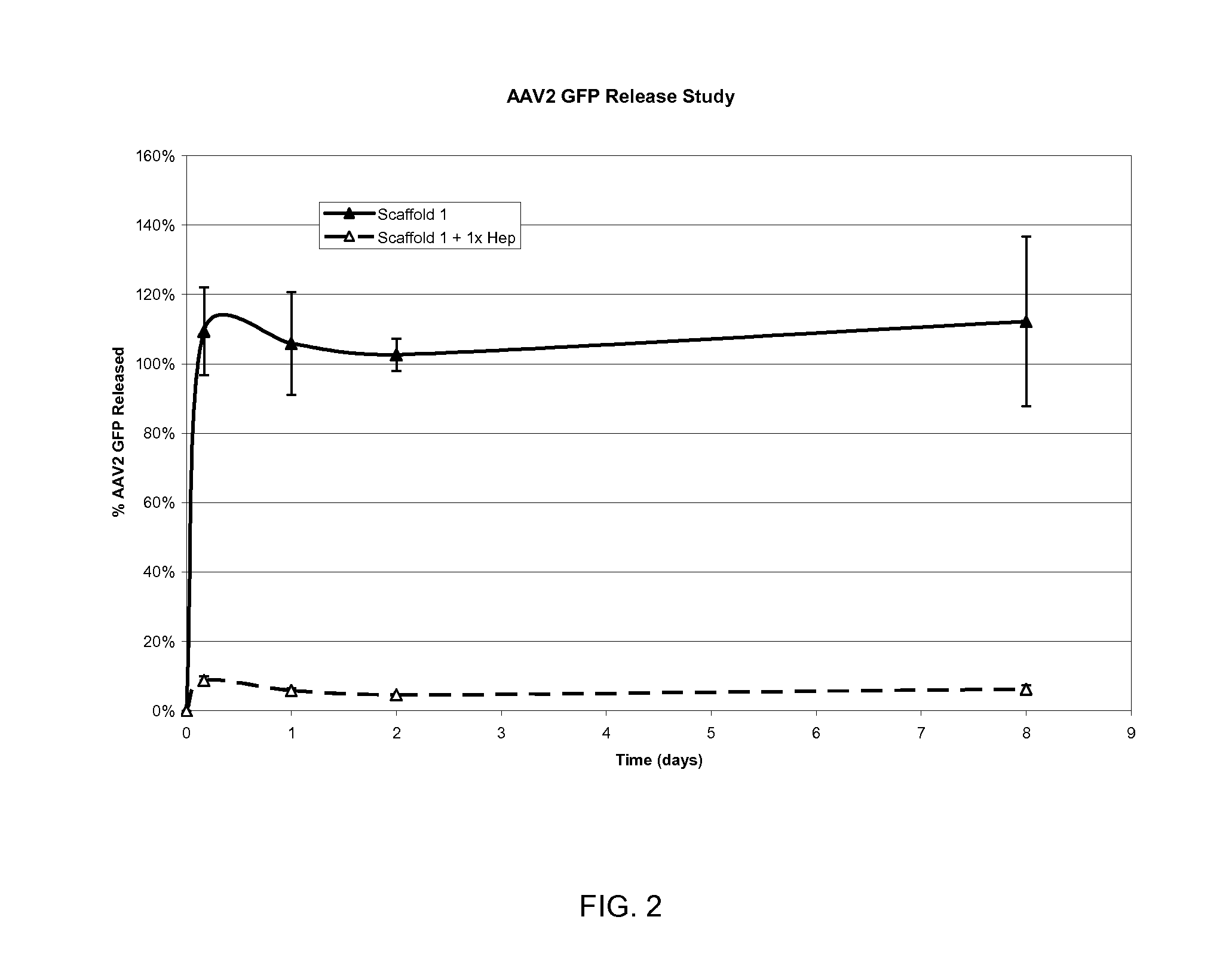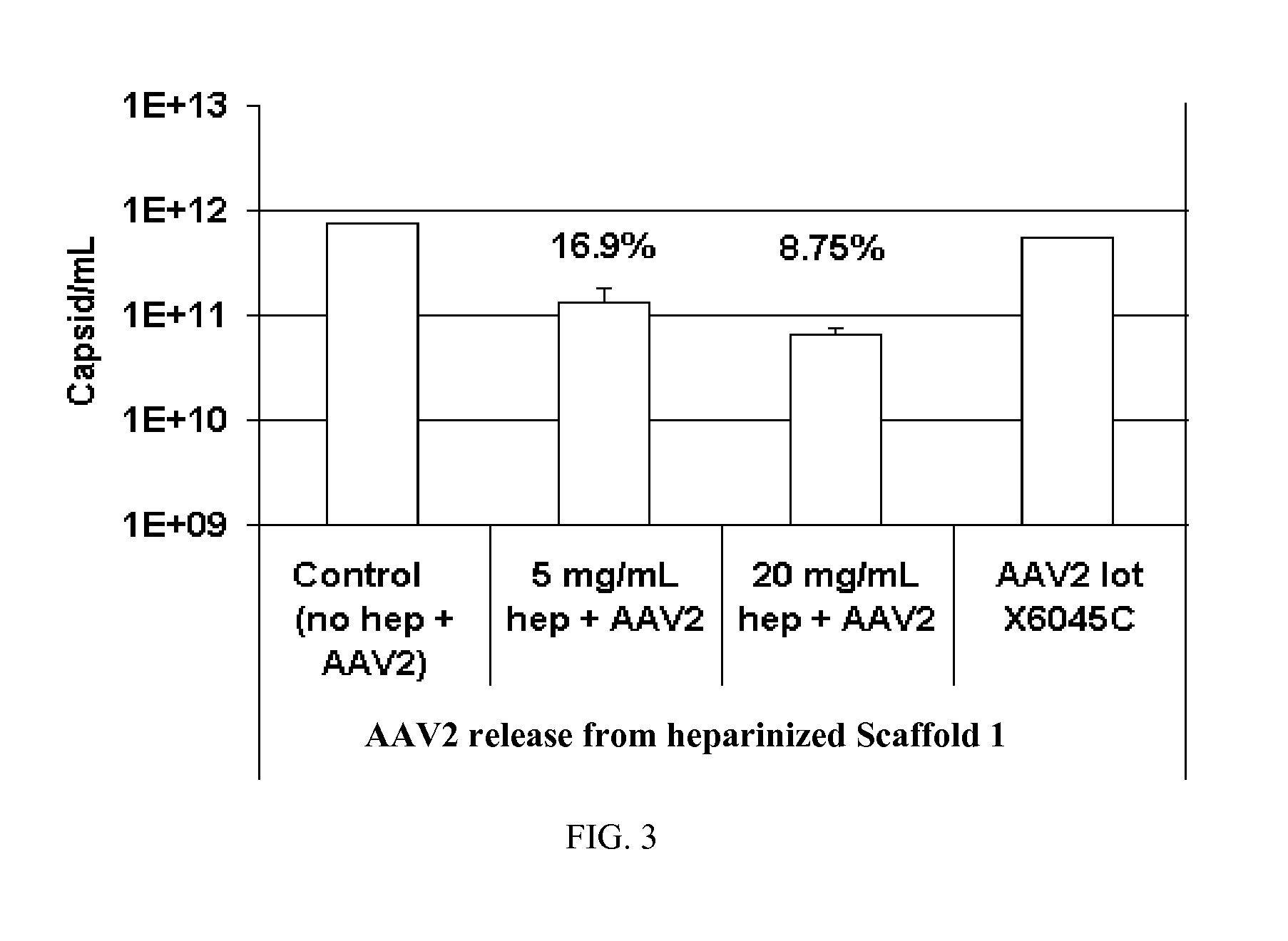Prolonged delivery of heparin-binding growth factors from heparin-derivatized collagen
a technology of heparin-binding growth factors and heparinderivatization, which is applied in the direction of prosthesis, drug composition, peptides, etc., can solve the problems of complex local delivery and relatively short in vivo half life of factors, and achieve the effect of potentiating biological activities
- Summary
- Abstract
- Description
- Claims
- Application Information
AI Technical Summary
Benefits of technology
Problems solved by technology
Method used
Image
Examples
example 1
Preparation of 12-13 kDa Heparin Fragments (1× Fragments)
[0051]Porcine mucosal heparin (1 g) was dissolved in 300 mL deionized water and cooled to 0° C. under constant stirring. Sodium nitrite (10 mg) was added to the heparin sulfate solution as a concentrated aqueous solution (100 mg / mL sodium nitrite in deionized water). Acetic acid (2 mL) was added dropwise and the solution was left to stir at 0° C. for 2 hours. The heparin solution was then dialyzed twice against 4 L of saline for a total of 24 hours and twice against 4 L of deionized water for a total of 24 hours. The heparin solution was lyophilized.
example 2
Preparation of 5-6 kDa Heparin Fragments (4× Fragments)
[0052]Porcine mucosal heparin (1 g) was dissolved in 300 mL deionized water and cooled to 0° C. under constant stirring. Sodium nitrite (40 mg) was added to the heparin sulfate solution as a concentrated aqueous solution (100 mg / mL sodium nitrite in deionized water). Acetic acid (8 mL) was added dropwise and the solution was left to stir at 0° C. for 2 hours. The heparin solution was then dialyzed twice against 4 L of saline for a total of 24 hours and twice against 4 L of deionized water for a total of 24 hours. The heparin solution was lyophilized.
example 3
Determination of 1× and 4× Heparin Fragment Molecular Weights Using Gel Permeation Chromatography (GPC)
[0053]TriSEC 302 (Viscotek): This GPC system consists of an HPLC pump (Viscotek VE1121), solvent degasser (Viscotek VE 7510), one column (Viscotek ViscoGEL GMPWXL) and four detectors in tandem: light scattering (RALLS—Right Angle Laser Light Scattering and LALLS—Low Angle Laser Light Scattering), refractive index and viscometer (Viscotek TDA model 302 with LALLS). Sample injections were performed by autosampler (Viscotek VE 5200) with a 100 μL injection volume. The mobile phase was an aqueous solution of 0.15M sodium nitrate at pH 7 and a flow rate of 0.5 mL / min and 30° C. column temperature. Data from light scattering, viscometer and refractive index detectors were collected and processed with OmniSEC 3.0 software (Viscotek) to give the weight-average molecular weight (Mw), number-average molecular weight (Mn), polydispersity (Mw / Mn) and intrinsic viscosity (IV) (See FIG. 6)
[0054]...
PUM
| Property | Measurement | Unit |
|---|---|---|
| molecular weight | aaaaa | aaaaa |
| molecular weight | aaaaa | aaaaa |
| molecular weight | aaaaa | aaaaa |
Abstract
Description
Claims
Application Information
 Login to View More
Login to View More - R&D
- Intellectual Property
- Life Sciences
- Materials
- Tech Scout
- Unparalleled Data Quality
- Higher Quality Content
- 60% Fewer Hallucinations
Browse by: Latest US Patents, China's latest patents, Technical Efficacy Thesaurus, Application Domain, Technology Topic, Popular Technical Reports.
© 2025 PatSnap. All rights reserved.Legal|Privacy policy|Modern Slavery Act Transparency Statement|Sitemap|About US| Contact US: help@patsnap.com



